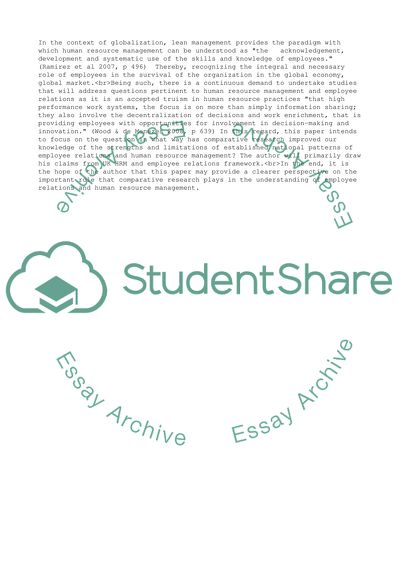Cite this document
(“In what ways has comparative research improved our knowledge of the Essay”, n.d.)
In what ways has comparative research improved our knowledge of the Essay. Retrieved from https://studentshare.org/business/1553532-in-what-ways-has-comparative-research-improved-our-knowledge-of-the-strengths-and-limitations-of-established-national-patterns-of-employment-relations-and-hrm
In what ways has comparative research improved our knowledge of the Essay. Retrieved from https://studentshare.org/business/1553532-in-what-ways-has-comparative-research-improved-our-knowledge-of-the-strengths-and-limitations-of-established-national-patterns-of-employment-relations-and-hrm
(In What Ways Has Comparative Research Improved Our Knowledge of the Essay)
In What Ways Has Comparative Research Improved Our Knowledge of the Essay. https://studentshare.org/business/1553532-in-what-ways-has-comparative-research-improved-our-knowledge-of-the-strengths-and-limitations-of-established-national-patterns-of-employment-relations-and-hrm.
In What Ways Has Comparative Research Improved Our Knowledge of the Essay. https://studentshare.org/business/1553532-in-what-ways-has-comparative-research-improved-our-knowledge-of-the-strengths-and-limitations-of-established-national-patterns-of-employment-relations-and-hrm.
“In What Ways Has Comparative Research Improved Our Knowledge of the Essay”, n.d. https://studentshare.org/business/1553532-in-what-ways-has-comparative-research-improved-our-knowledge-of-the-strengths-and-limitations-of-established-national-patterns-of-employment-relations-and-hrm.


